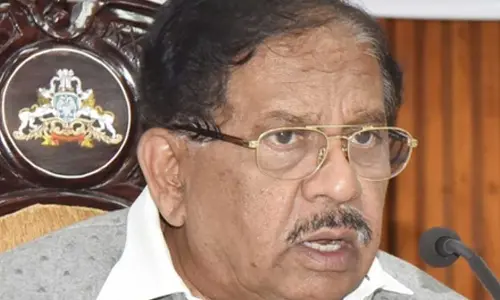Indian banks emerge more resilient

Need to be wary of digital banking pitfalls, global uncertainties
The positive steps taken by the government and RBI in the time of Covid 19 and afterwards have helped the Indian economy and financial system’s stability, fiscal stability. It becomes binding on the part of all stakeholders to safeguard and preserve the financial stability and fiscal prudence in the light of any futuristic challenges. Indian banks have to cover large gap in terms of their credit penetration, covering deep pockets in providing micro credit, SME credit and bringing the unreached to inclusive for credit accessibility
The Reserve Bank of India (RBI) recently released its latest Financial Stability Report (FSR) June 2023 against the FSR in December 2022. This report serves as a useful and very important study conducted by RBI on a half-yearly basis. It provides feedback as to the ability of the financial institutions and other regulated institutions in the financial equity, forex, gold, capital markets to withstand economic, financial, or unexpected shock arising in the economy and its consequential impact on financial markets. The vulnerability of the financial institutions to different scenarios of financial risk will be assessed.
The highlights of the RBI report are as follows: 1. The global economy is facing heightened uncertainty amidst banking system fragility in some countries; 2. Despite global headwinds, the Indian economy and the domestic financial system remain resilient, supported by strong macro-economic fundamentals; 3.Continuing growth momentum, moderating inflation, narrowing current account deficit and rising foreign exchange reserves, ongoing fiscal consolidation and a robust financial system are setting the economy on a path of sustained growth; 4. Healthy balance sheets of banks and corporates are engendering a new credit and investment cycle and brightening the prospects of the Indian economy 5.The CRAR and CET1 ratio of scheduled commercial banks (SCB) rose to historical highs of 17.1 per cent and 13.9 percent, respectively, in March; 6. The GNPA ratio of SCB’s continued its downtrend and fell to a 10- year low of 3.9 per cent in March and NNPA declined to one per cent. 7. The system-level capital to risk weighted assets ratio (CRAR) in March 2024, under baseline medium and severe stress scenarios, is projected at 16.1 per cent, 14.7 per cent and 13.3 per cent, respectively.
The RBI Governor in his foreword has warned the new risks arising out of the recent banking turmoil in the US and UK. Apart from the interest rate risks on account of action of the central banks in increasing reference interest rates to control inflation, there was a new risk arising out of digital banking, which can result in substantial withdrawal of deposits in some banks. The question of insured and uninsured deposits is also another factor that becomes relevant in terms of safety of the depositors money.
It is also true that the strong position of the banking system in terms of favourable financial ratios, like higher capital adequacy, low-level of gross and net NPAs, higher level of credit growth and provisioning coverage ratio should not lead us to any comfort position. Banks have to continuously strive for higher capital adequacy and suitable capital conservation buffer more than regulator prescribed to take care of short and medium term risks. Hence, RBI Governor adds “it has to be remembered that seeds of vulnerability often get sown during good times when risks tend to get overlooked.”
In the concluding paragraph he states that “financial stability is non- negotiable and all stakeholders in the financial system must work to preserve this at all times.”
The positive steps taken by the government and RBI in the time of Covid 19 and afterwards have helped the Indian economy and financial system’s stability, fiscal stability. It becomes binding on the part of all stakeholders to safeguard and preserve the financial stability and fiscal prudence in the light of any futuristic challenges.
Some of the major indicators like gross advances of SCBs have grown from Rs 83.6 lakh crore in 2018 to Rs 135 lakh crore in 2023 (March 2023).
In the same period, Gross NPA has come down from 11.5% to 3.9 % and Net NPA from 6.1% to1.0%. ROA has gained substantially during the period from 0.2 to 1.1 against the back of good profitability last year. This has also resulted in Average CRAR improving from 13.8% to17.1%. Parallel LCR (Liquidity Coverage Ratio) has stood at 127.3 and 144.7 levels in 2018 and 2023 respectively. The report states that the Indian financial system, led by a sound banking system, remains stable and supportive of the productive needs of the economy.
Banks have to endeavour to healthy growth of credit with supportive resource mobilisation, profitability being improved with better supervision and control on asset quality, better recovery and enhance the return on assets and return on equity to the global standards. Banks have to remain competitive with best digital system adoption, innovative products, fair pricing, customer centric, financial inclusion and providing stakeholders’ value proposition. Banks have also to take care of climate challenge, environmental risk, socially responsible bank and highest governance standards.
The RBI report states that despite the recent step-up in bank credit growth, credit to GDP gap remains negative since March 2013, reflecting still muted credit absorption in India relative to advanced and emerging markets. Indian banks have to cover large gap in terms of their credit penetration, covering deep pockets in providing micro credit, SME credit and bringing the unreached to inclusive for credit accessibility.
According to the World Bank, India’s domestic credit to the private sector at 55% of GDP in 2020 is remarkably below the world average (148%) and lowest among its Asian peers - China (182%), South Korea (165%) and Vietnam (148% ).
India’s further penetration in filling the credit gap can contribute to incremental annual GDP growth and the scope is substantially available in India. We also need to cover more depositors into the banking fold, provide positive returns to the depositors, deposit base and deposit franchise to be enhanced to have the deposit resources adequately to provide enhanced credit to the productive sectors of the economy to enhance their respective contributions to GDP.
The recent deposit growth at 9 to 10 per cent is lagging behind the credit growth of 15 to16 per cent. It is in this regard that we need to step up deposit growth to keep up incremental credit growth.
The report states that aggregate deposits growth, which had undergone a slight moderation during 2021-22 and H1 2022-13, picked up pace to reach 11.8% as on June 2, 2023. SCB credit growth has been accelerating since early 2022, led by both public sector banks and private sector banks, by June 2, 2023 and reached 15.4.per cent.
There are useful study and analysis available in this FSR June 2023. The report needs to be studied in detail by every stakeholder, who has to use it in their business strategy and risk management initiatives.
We appreciate the efforts of RBI officials in bringing such useful study and information to all stakeholders twice a year for better understanding and preparing for the future.














